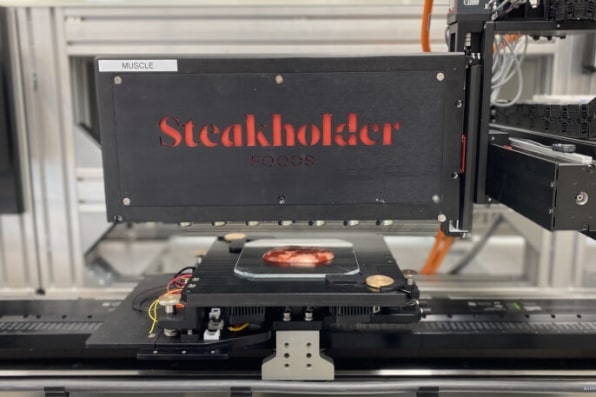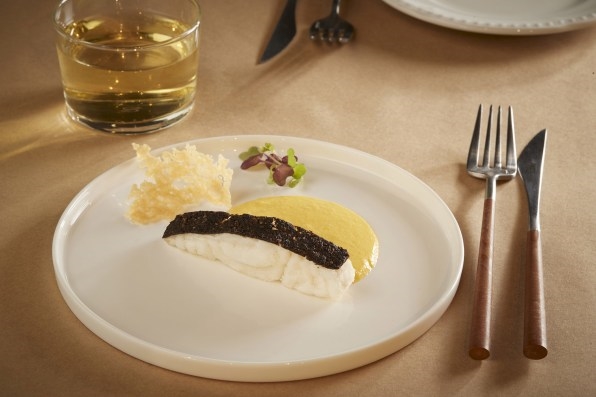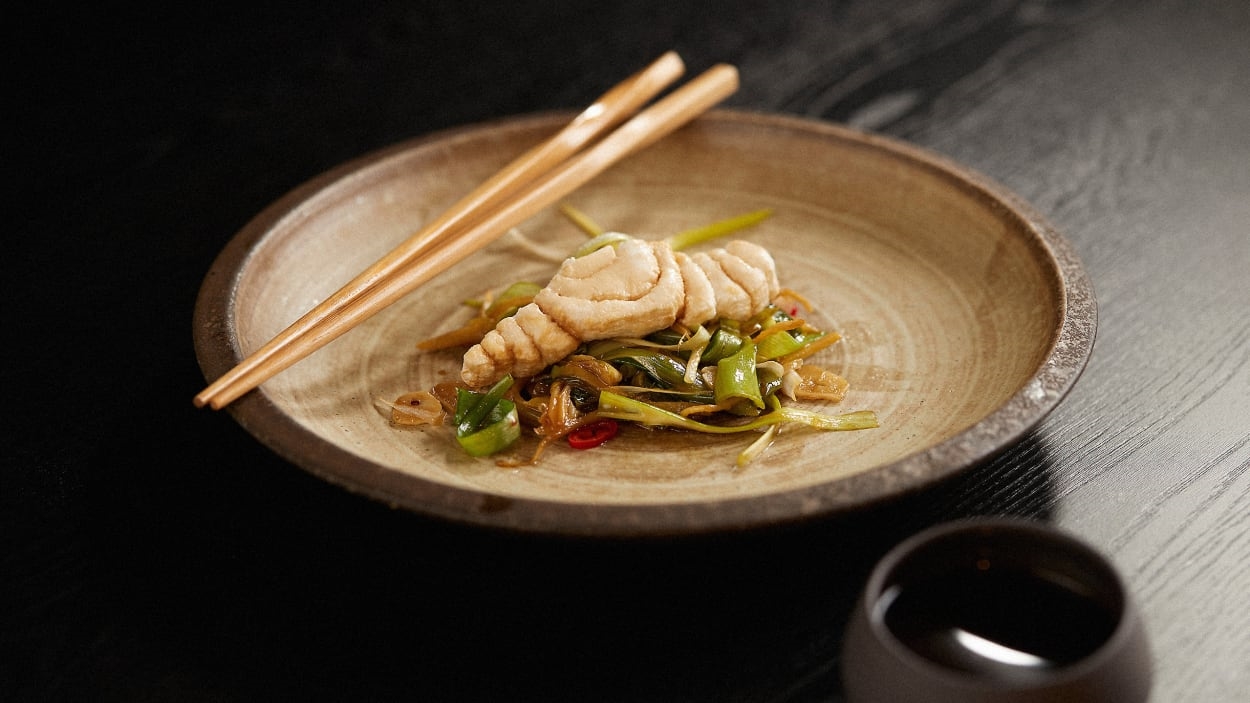This fish filet will be grown in a lab and 3D-printed before it ends up on your plate
By Miranda Lipton
Overfishing is depleting the global fish population, while microplastics and mercury pollute the remaining marine life. In response, a biotech firm and an agriculture startup have formed a partnership to develop a sustainable seafood alternative.
And it’s made from a 3D printer.
Israeli company Steakholder Foods and Singaporean company Umami Meats have banded together to develop cultivated seafood for a global audience. Using the cells of endangered, threatened, and protected fish species along with plant cells, the partnership will cultivate lab-grown fish, which can then be formed into filets using a special 3D printer developed for the task.
The 3D-printed filets have a texture and taste that the company claims nearly mirror those of natural fish. “3D bioprinting allows for precise control over the composition and characteristics of the meat product. It opens up possibilities for customization,” says Mor Glotter, VP of marketing at Steakholder Foods, adding that it allows them to do things like adjust the nutritional content, incorporate specific flavors or textures, and even tailor the products for particular dietary needs.
3D bioprinting is relatively common for many cultivated meat and fish companies, but Steakholder Foods’ can print at an industrial scale, using conveyor belts and multiple print heads, which differentiates its process from many other companies. (Steakholder Foods has already been 3D printing cultivated beef for several years.)

It’s increasingly common to hear about “lab-grown” or “cultivated” meat, where animal cells are used to develop beef or chicken alternatives that mimic their animal-meat counterparts in flavor, texture, and nutrition. But while lab-grown meat has been around for a decade, the Stakeholder Foods and Umami Meats partnership was the first to create cultivated fish when the product launched in April. Other companies are also popping up in the space, including Finless Foods and Bluu.
Cultivated fish has a long way to go before it’s commercially viable, between government approvals, scalability, and product development in itself. But in late June, the USDA approved Upside Foods and Good Meat to begin selling cultivated meat and chicken products in the U.S. This will ultimately help clear the path for cultivated fish as well.
“I think the fundamental technology is very similar,” says Mihir Pershad, CEO of Umami Meats. “Our biggest challenge in seafood is we’re starting from a lower knowledge base than the mammalian kind of cultivated meat teams because they can rely more on human cell-culture research than we can. Fish are more different evolutionarily from other animals that we farm.” Stakeholder Foods and Umami Meats are using the cells of tuna, grouper, snapper, and eel to create filets that mirror their true fish counterparts.
In 2013, the first cell-cultured hamburger was sold for more than $1 million per pound; the burger has now come down to $50, a still-astronomical price that underscores how far meat has to go to achieve parity.
But cultivated fish might have an advantage when it comes to price: The fact that seafood is generally sold at a higher price point than meat could make it easier to achieve price parity with traditional seafood.
“If it were something that was always just going to be a high-end product, there would be very little point in doing this at all,” says Claire Bomkamp, cultivated meat and seafood specialist at The Good Food Institute.

In fact, Umami Meats plans to sell its first products at around $80 to $85/kg for eel, which is on par with wholesale prices for premium unagi. Working with high-value species like eel enables them to reach parity early in the production scale-up.
“I actually think cultivated seafood has an easier path to scale [than meat or poultry],” says Pershad. “These are species that traditional fishing companies cannot catch at the levels they want to anymore, but they know consumers still want them.”
Their soon-to-launch-pilot plant will be operational by 2025 and will serve restaurants and commercial markets in Singapore, which is the only country to approve cultivated meats for sale until the recent USDA decision.
As one-third of all fish stocks are being fished faster than they can replenish, and another 58% already fished to capacity, the demand for fish or fish-like alternative proteins will continue to grow.
“The seafood industry is contributing to climate change and it’s also threatened by climate change,” Bomkamp said. “As oceans get warmer, acidification happens, and it becomes really a challenge to think about how we are going to even continue producing the seafood that we’re producing today. So we’re really talking about a problem of: How do we produce seafood at scale in a way that’s environmentally conscious?”
But while cultivated-meat technology continues to advance, the tradeoffs are still an open question.
Although the industry is looking toward using renewable energy sources, it’s still a long way off from that being a reality. However, California-based Upside Foods is already powering its 53,000-square-foot facility entirely with renewable energy—showing that it’s achievable for companies that make it a priority.
(12)



